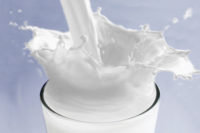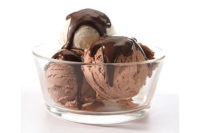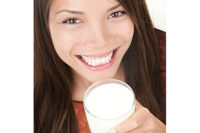Telling Tea’s Fortune
The future looks bright for tea: Here’s why

Tea, even when served cold, is hot. Other than water, tea is the most consumed beverage in the world and the 6th or 7th most consumed beverage in the United States. On average, Americans drink 155 cups of tea per year. Packaged Facts predicts that the retail market growth of tea will edge up from 6.6% in 2012 to 8.7% in 2014, reaching $8.3 billion.
According to The Tea Association of the USA, tea’s popularity is due to ready-to-drink packaging, wide availability, strong marketing programs and consumer awareness of tea’s potential health benefits.
Market analysis by World Tea Media ascertains that the top six tea trends for 2012 are quality tea, growth in tea retail, cold brew green tea, green tea popularity, Matcha lattes (a blend of powdered green tea, milk and flavorings) and tea-enhancing wares. In terms of the top trend—quality tea—as the tea industry educates consumers about tea quality, interest builds in buying better teas. At the same time, manufacturers are determining how to define quality in terms of Fair Trade, amount of dissolved solids, amount of added sugar and other possible quality indicators.
Health Benefits
Seventy-six percent of tea drinkers are aware of the potential health benefits of tea. The “true” teas such as black and green tea, rather than herbal teas, are thought to confer health benefits. These benefits are attributed to polyphenols, a group of plant chemicals including catechins, which may have anti-inflammatory, antioxidant and anti-cancer properties.
Although most of the tea consumed in the United States and the world is black, the bulk of the research regarding human health has been done on green tea, which has higher levels of polyphenols. And although white tea is also high in polyphenols, little research has been done in this area.
The strongest evidence linking tea and health is related to heart health. Several studies suggest drinking tea may decrease risk of heart attack, lower cholesterol and decrease blood pressure; however, results are inconsistent and in 2006 the FDA determined the evidence to be inconclusive. According to the National Cancer Institute and National Institutes of Health, the research on tea and cancer is also inconclusive. And the research is preliminary in terms of reducing the risk of metabolic syndrome and diabetes, improving dental health, and aiding in weight loss.
The amount and bioavailability of polyphenols in tea influences the health-related effects and may be a confounding factor in the research. Of note is that bottled tea contains fewer polyphenols than brewed tea, and that the bioavailability of polyphenols may be affected by other ingredients such as milk.
Hydration
Tea contains mostly water and a minimal amount of caffeine: about 25 to 100 milligrams caffeine per 8 ounces. Since studies have found no negative effects on hydration with intakes up to 400 milligrams of caffeine per day, a moderate intake of tea contributes toward positive fluid balance.
“Tea is a good option for hydration, especially for people who don’t like plain water,” says Katie Davis, MS, RD, CSSD, consulting sports dietitian/nutritionist in the Chicago area. “I recommend athletes drink tea in the morning and stop at noon so the caffeine doesn’t disrupt sleep.” In terms of athletic performance, Davis says research indicates that green tea contains antioxidants and reduces oxidative damage to muscles which can be helpful for recovery, and that it may improve the body’s ability to use fat for energy and therefore reduce fatigue; however, these factors haven’t been shown to translate to better performance.
Sweetening Trends
Consumers look to tea as a healthier alternative to soft drinks. With today’s focus on health and wellness, Kurt Ruppman, managing member of True Brew Enterprises, believes that what’s done in schools drives retail. “Schools don’t want high fructose corn syrup or artificial products and that includes artificial sweeteners,” says Ruppman, noting that True Brew bottled teas contain only organic cane sugar. “They want to get back to natural products.”
Flavor Trends
“There’s a lot going on with flavors,” says Joe Simrany, president of the Tea Association of the U.S.A., Inc. He recounts that when green tea was new on the market, consumer acceptance was low due to its unfamiliar flavor, then savvy marketers added citrus flavors and acceptance vastly improved. Now that consumers are used to the flavor of green tea, the market for pure green tea has increased dramatically.
In terms of flavoring black tea, Simrany says the most popular is lemon, followed by peach, raspberry and lime, with a recent interest in superfruit flavors such as mangosteen, noni and goji.
“It’s an ongoing exercise in experimentation,” he says, noting that, other than sales data, no one has done research on the most popular flavors. “Consumers are looking for the fountain of youth,” says Simrany. “That’s driving experimentation: Combining fruit or herbs that have a reputation for being healthy with tea amplifies the perception of the product’s healthfulness.”
Kim Jage, sales and marketing director for World Tea Media which produces the North American Tea Championship, says the most popular flavor in tea is mango and the top flavor trends are apple and blueberry. Also popular is a half-and-half blend of tea and lemonade, which Jage says “everyone is doing.”
Tea itself is used to flavor other beverages such as water, energy drinks and juices, again with emphasis on the health benefits of polyphenols. To enhance milk’s reputation, Simrany suggests that dairy processors explore new opportunities using tea, as with chai, especially since tea is available in so many forms including concentrates and extracts, and in new packaging such as additive packets. Simrany recommends attending a variety of trade shows for inspiration. “Observe, keep an open mind and experiment. The key is to get on the trends as they’re just beginning.”
Looking for a reprint of this article?
From high-res PDFs to custom plaques, order your copy today!






